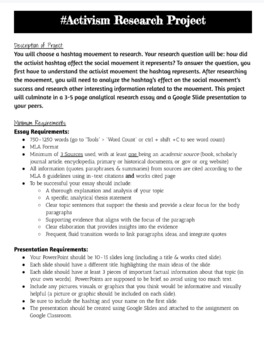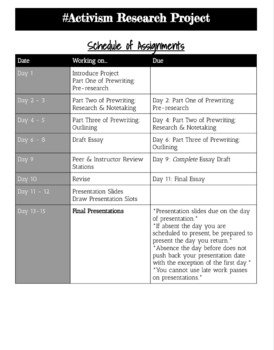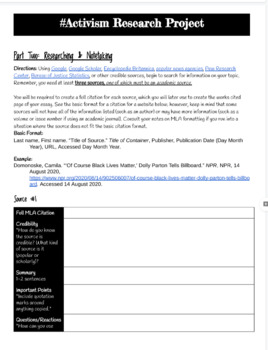#Activism Research Project: Perfect for Social Justice/Informational Text Unit
- Google Docs™

What educators are saying
Description
Thanks to social media and trending hashtags, modern activism movements look much different than the activism of the past. This project is a great addition to any study of activism, social justice, social movements, informational text, or just as a stand-alone research project. It is crucially important we teach students how to research and understand the movements of their generation so they can actively participate in the dialogue that is taking place all around them. Understanding the current conversations is the first step to being an informed and active citizen. But how well do these hashtags work? What societal effects do they have on the social movement they represent? These are just two of the questions students explore throughout this project.
This project calls for students to select an activism hashtag to research with the primary focus being to determine how the hashtag has affected the movement it represents. The project is highly scaffolded with each step being broken down for students. I use this as the first major writing assignment for my sophomores, so there's a lot of check-ins and scaffolding to help them out. Depending on your students' ability-levels you could easily speed this project up by cutting out some of the scaffolding components that are built into the project. Also, I have included both a presentation and an essay assignment. I usually have students do both, but you could opt for just one in order to save time.
At the end of this project students will be able to:
- Compose additional research questions to answer their main research question.
- Develop keywords to use when researching.
- Evaluate the credibility of sources.
- Properly cite sources in MLA format.
- Learn how to take and organize notes while researching.
- Compile and organize research into a casual analysis research paper.
- Write a well-organized research paper.
- Identify key structural components of their own essay.
- Create and present a slideshow presentation to their peers.
- Provide good, meaningful feedback to their peers.
- Reflect upon their writing and speaking performances.
- Use technology to create and share information.





